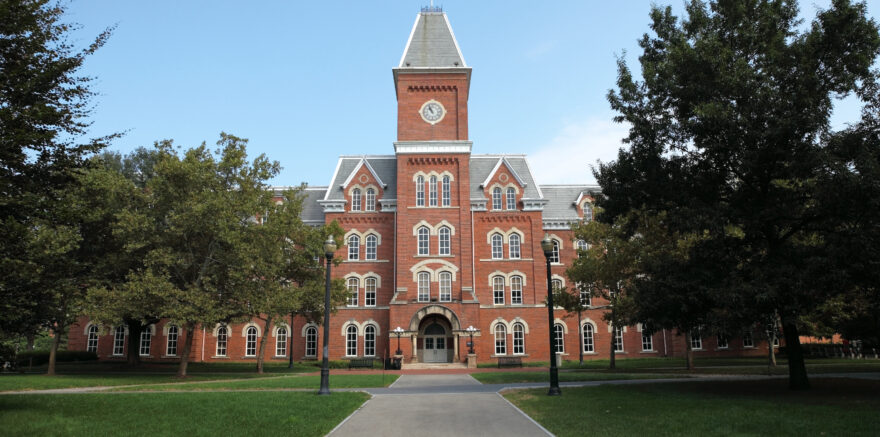- Blog
- > College Admissions
Drastic Changes in College Acceptance Rates in Recent Years
- Dr. Rachel Rubin
- | June 10, 2021

As we all know by now, many colleges and universities in the United States became much more selective during the most recent application cycle, largely due to a surge in applications resulting from both short- and long-term changes. But the extent of that change can be hard to see, especially when acceptance rates are already so low at so many schools.
To that end, we’ve compiled the most recent data on acceptance rates at top schools and how they changed from the prior year. Note that the “Change” column represents the total magnitude of the change, not the arithmetic difference. That is, a drop from a 30% admission rate to a 28% admission rate represents a less significant change than a drop from 5% to 3%, because that 2% accounts for a much larger share of the total applicants in the latter scenario.
Changes to Overall Acceptance Rates
The overall acceptance rate at a school is the total number of admitted students divided by the total number of applicants, including both early and regular applicants. As you can see in the table below, the majority of top-100 universities saw their acceptance rates drop, some precipitously so. On the other hand, a handful did rise, even in this challenging year.
| School | Most Recent Overall Acceptance Rate | Prior Year Overall Acceptance Rate | % Change in Likelihood of Acceptance |
|---|---|---|---|
| Boston College | 19% | 24% | -20.8% |
| Boston University | 18% | 19% | -5.3% |
| Brandeis University | 30% | 31% | -3.2% |
| Brown University | 5% | 7% | -28.6% |
| California Institute of Technology | 7% | 6% | 16.7% |
| Carnegie Mellon University | 17% | 15% | 13.3% |
| Case Western Reserve University | 30% | 27% | 11.1% |
| Columbia University | 4% | 5% | -20.0% |
| Cornell University | 11% | 11% | 0.0% |
| Dartmouth College | 6% | 9% | -33.3% |
| Duke University | 6% | 8% | -25.0% |
| Emory University | 18% | 18% | 0.0% |
| Georgetown University | 12% | 16% | -25.0% |
| Georgia Institute of Technology | 18% | 20% | -10.0% |
| Harvard University | 3% | 5% | -40.0% |
| Johns Hopkins University | 7% | 9% | -22.2% |
| Lehigh University | 45% | 32% | 40.6% |
| Massachusetts Institute of Technology | 4% | 7% | -42.9% |
| New York University | 13% | 15% | -13.3% |
| Northeastern University | 20% | 18% | 11.1% |
| Northwestern University | 7% | 9% | -22.2% |
| Pepperdine University | 32% | 31% | 3.2% |
| Princeton University | 4% | 6% | -33.3% |
| Rensselaer Polytechnic Institute | 47% | 43% | 9.3% |
| Rice University | 9% | 10% | -10.0% |
| Santa Clara University | 51% | 48% | 6.3% |
| Stanford University | 5% | 4% | 25.0% |
| Tufts University | 11% | 15% | -26.7% |
| Tulane University | 11% | 13% | -15.4% |
| University of California-Berkeley | 18% | 17% | 5.9% |
| University of California-Davis | 47% | 39% | 20.5% |
| University of California-Irvine | 30% | 27% | 11.1% |
| University of California-Los Angeles | 14% | 12% | 16.7% |
| University of California-San Diego | 38% | 32% | 18.8% |
| University of California-Santa Barbara | 30% | 30% | 0.0% |
| University of Chicago | 6% | 6% | 0.0% |
| University of Florida | 29% | 29% | 0.0% |
| University of Georgia | 39% | 46% | -15.2% |
| University of Illinois-Urbana-Champaign | 59% | 62% | -4.8% |
| University of Miami | 33% | 27% | 22.2% |
| University of Michigan-Ann Arbor | 26% | 23% | 13.0% |
| University of North Carolina-Chapel Hill | 24% | 23% | 4.3% |
| University of Notre Dame | 15% | 16% | -6.3% |
| University of Pennsylvania | 6% | 8% | -25.0% |
| University of Rochester | 30% | 29% | 3.4% |
| University of Southern California | 12% | 16% | -25.0% |
| University of Texas-Austin | 32% | 32% | 0.0% |
| University of Virginia | 21% | 21% | 0.0% |
| University of Wisconsin-Madison | 54% | 53% | 1.9% |
| Vanderbilt University | 7% | 10% | -30.0% |
| Villanova University | 25% | 29% | -13.8% |
| Wake Forest University | 30% | 30% | 0.0% |
| Washington University in St. Louis | 13% | 13% | 0.0% |
| William and Mary | 42% | 38% | 10.5% |
| Yale University | 5% | 7% | -28.6% |
Changes to Early Acceptance Rates
However, as you no doubt know, overall acceptance rate is not the only statistic that matters. During such an uncertain and unprecedented time, many schools relied more heavily on early admission applicants than ever, at least where offered. Nevertheless, even early acceptance rates fell at most schools, particularly the most selective, or else remained the same.
In addition, these data also show another interesting trend: namely, that a growing number of colleges are not reporting their early acceptance data. In almost all cases, early admission rates are higher than the overall rate, and much higher than the regular decision rate. But exactly how much higher is not something that schools necessarily want to advertise.
| School | Most Recent Early Acceptance Rate | Prior Year Early Acceptance Rate | % Change in Likelihood of Acceptance |
|---|---|---|---|
| Boston College | Not Reported | 37% | No Data |
| Boston University | 33% | 28% | 17.9% |
| Brandeis University | 56% | 42% | 33.3% |
| Brown University | 16% | 18% | -11.1% |
| California Institute of Technology | 10% | 10% | 0.0% |
| Carnegie Mellon University | 25% | 19% | 31.6% |
| Case Western Reserve University | Not Reported | 39% | No Data |
| Columbia University | 10% | 15% | -33.3% |
| Cornell University | 24% | 24% | 0.0% |
| Dartmouth College | 22% | 21% | 4.8% |
| Duke University | 17% | 21% | -19.0% |
| Emory University | 39% | 33% | 18.2% |
| Georgetown University | 11% | 12% | -8.3% |
| Georgia Institute of Technology | 21% | 21% | 0.0% |
| Harvard University | 7% | 7% | 0.0% |
| Johns Hopkins University | 20% | 29% | -31.0% |
| Lehigh University | 73% | 66% | 10.6% |
| Massachusetts Institute of Technology | 5% | 7% | -28.6% |
| New York University | Not Reported | 28% | No Data |
| Northeastern University | 38% | Not Reported | No Data |
| Northwestern University | 24% | 25% | -4.0% |
| Pepperdine University | 61% | 48% | 27.1% |
| Princeton University | 14% | 14% | 0.0% |
| Rensselaer Polytechnic Institute | Not Reported | 47% | No Data |
| Rice University | 16% | 22% | -27.3% |
| Santa Clara University | 69% | 82% | -15.9% |
| Stanford University | 7% | 7% | 0.0% |
| Tufts University | Not Reported | Not Reported | No Data |
| Tulane University | 23% | 32% | -28.1% |
| University of California-Berkeley | N/A | N/A | N/A |
| University of California-Davis | N/A | N/A | N/A |
| University of California-Irvine | N/A | N/A | N/A |
| University of California-Los Angeles | N/A | N/A | N/A |
| University of California-San Diego | N/A | N/A | N/A |
| University of California-Santa Barbara | N/A | N/A | N/A |
| University of Chicago | 20% | 20% | 0.0% |
| University of Florida | N/A | N/A | N/A |
| University of Georgia | 59% | 43% | 37.2% |
| University of Illinois-Urbana-Champaign | Not Reported | Not Reported | No Data |
| University of Miami | Not Reported | Not Reported | No Data |
| University of Michigan-Ann Arbor | Not Reported | Not Reported | No Data |
| University of North Carolina-Chapel Hill | 28% | 31% | -9.7% |
| University of Notre Dame | 22% | 26% | -15.4% |
| University of Pennsylvania | 15% | 20% | -25.0% |
| University of Rochester | 33% | 33% | 0.0% |
| University of Southern California | N/A | N/A | N/A |
| University of Texas-Austin | N/A | N/A | N/A |
| University of Virginia | 33% | 35% | -5.7% |
| University of Wisconsin-Madison | Not Reported | Not Reported | No Data |
| Vanderbilt University | 18% | 21% | -14.3% |
| Villanova University | 56% | 56% | 0.0% |
| Wake Forest University | Not Reported | 41% | No Data |
| Washington University in St. Louis | 29% | 37% | -21.6% |
| William and Mary | 51% | 49% | 4.1% |
| Yale University | 11% | 11% | 0.0% |
Final Thoughts
Broadly speaking, gaining admission to top colleges is more competitive than ever these days, which means that it’s more important than ever that students stand out from the thousands of other applicants to these highly selective colleges. The more they can identify and articulate what makes them outstanding scholars and unique individuals, the more likely they will be to rise to the top of the pile and join the ranks of that year’s accepted students.
Spark Admissions college counselors are dedicated not only to closely tracking this data, but also to helping students use it to their advantage. Despite the challenges this year, our acceptance rates at top schools remain significantly higher than the national average. If you want to know how these changes may affect your college admission plan, contact us for a free consultation today.


